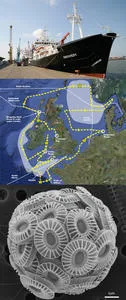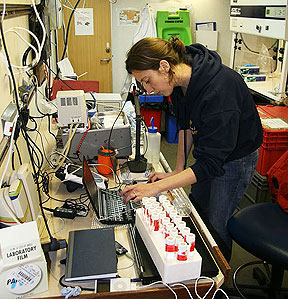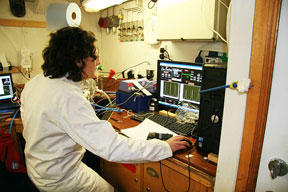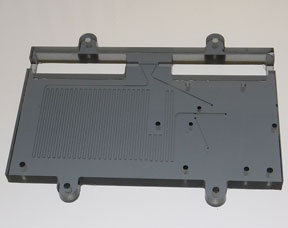
Today’s blog is written by the two other people responsible for measuring seawater carbon chemistry: Cynthia Dumousseaud and Victoire Rerolle from the National Oceanography Centre Southampton.

First let’s come back to the chemistry. Carbon is dissolved in seawater in different forms that can interchange with each other. Some of it, but not all, is CO2 dissolved in seawater. The problem with increasing CO2 due to fossil fuel burning is that it also causes the availability of the other forms in seawater to change. For instance, it leads to less carbonate ions, and it is this which makes calcium carbonate more liable to dissolve in seawater, as explained with regards to pteropods yesterday. In order to understand these phenomena it is therefore necessary to measure the carbonate chemistry. So, what are the parameters measured?

We cannot directly measure everything we would like to. We can however measure the four parameters presented in Saturday’s blog: DIC (the total amount of Dissolved Inorganic Carbon in each litre), alkalinity, pH and pCO2 (‘partial pressure’ of carbon dioxide in seawater). From any two of these parameters it is possible to calculate pH and everything else to do with the chemistry of carbon in seawater.
Cynthia and Victoire are working in the chemistry lab where a French atmosphere reigns.
Cynthia is responsible for the measurement of DIC and alkalinity in samples from the bioassays. The systems used (Apollo) are different to the ones used by Dorothee and Gareth (VINDTA) as the Apollo requires less volume for the analysis. The water from the bioassays is extremely limited and for that reason precious, and there are many biologists and others eager to measure different parameters.

Victoire is measuring pH using a new method. The aim is to develop a miniaturised pH system which could then be deployed on moorings or underwater vehicles. One of the key parts of the system is the microfluidic chip (see picture), enabling the instrument to measure pH using only very small amounts of seawater and chemicals. The instrument, still at an early stage of development, currently runs full-time in one of the ship’s indoor laboratories. It receives seawater piped in a never-ending supply from outside the ship, allowing continuous analysis of surface seawater. Results so far are very promising.
All this lab work keeps us very busy but fortunately being at sea can be very good fun as well. Yesterday we had the chance to see three dolphins playing at the bow of the ship. We are looking forward to see some more wildlife.